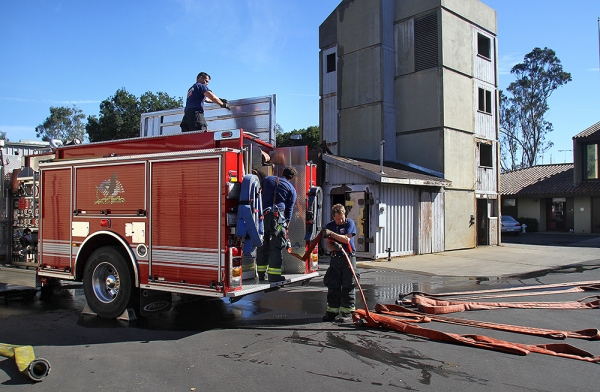The Palo Alto City Council approved on Monday a new fire-protection contract with Stanford University, an agreement that that caps more than five years of tense negotiations and that establishes a new service model for a partnership that has been in place for more than 40 years.
The contract, which was approved by a unanimous vote, spans the period between July 1, 2018 and June 30, 2023 and will automatically renew for another five years unless either party chooses to terminate it and informs the other party by Jan. 1, 2022.
The agreement requires the city to provide the Stanford fire station with six emergency responders daily and associated backfill positions necessary for three daily shifts. The station would have no less than one fire engine, one rapid-response vehicle and one fire ladder truck.
Under the terms, Stanford's payments will be made based on a newly developed methodology, which allocates costs to each fire station based on the resources it uses. The university will also cover a proportionate share of the department-wide overhead costs, including fleet maintenance, utilities and executive administration. Under this new methodology, Stanford's payments to the city for Station 6 services would total about $6.3 million, or about 19 percent of the department's $33.5-million budget, according to the fiscal year 2018 budget.
The Fire Department is required to provide to Stanford the same level of services as it provides to Palo Alto.
Both sides characterized the agreement on Monday as an important, long-awaited milestone. Councilman Greg Scharff, who made the motion to approve the contract, described the process of reaching an agreement with Stanford as a "long haul," dating back to 2012. That was the year when Stanford decided to close the Station 7 that serviced the SLAC National Accelerator Laboratory, sparking a dispute with the city over what impact the closure should have on Stanford's payments to the city.
"This is the one thing that has actually been keeping me up at night as a council member. ... It's really thrilling to see it happen," Scharff said. "I thought to myself the entire time, the dire consequences frankly if we didn't come to an agreement."
A failure to reach a consensus would have meant slower response times for fire and ambulance services, Scharff said, with potentially fatal consequences for residents.
As part of the deal, Stanford and the city are also settling the dispute over the university's overpayment to the city between 2012 and 2016, after Station 7 was closed. The city had agreed to pay $5.5 million to Stanford by July 1, 2019. The city is also giving Stanford a credit of $1 million for the liquidation of a fire vehicle, as is allowed under the original 1976 agreement.
Jean McCown, Stanford's associate vice president of government and community relations, called the new agreement "fresh and comprehensive." The cost model, she said, was based on a bottom-up approach in which both sides performed a detailed analysis of Stanford's service needs and calculated the cost of providing each of those needs.
The agreement, she said, "will allow for a very clear understanding going forward, hopefully to the benefit of all of our successors, in contrast to the prior agreement that has a percentage formula that no one understood how it worked."
"We look forward to a very strengthened partnership between Stanford University and the city of Palo Alto for our fire services," McCown said.
Councilman Tom DuBois said he hopes the agreement will be the start of "getting the relationship between the city and Stanford back on track." He also suggested that the university consider, as a "good faith" gesture, donating the money it received from the city's settlement to the Palo Alto Unified School District to offset some of the anticipated impacts on the district of the university's proposed expansion.
"I'm happy we can put this episode behind us," DuBois said.



Comments